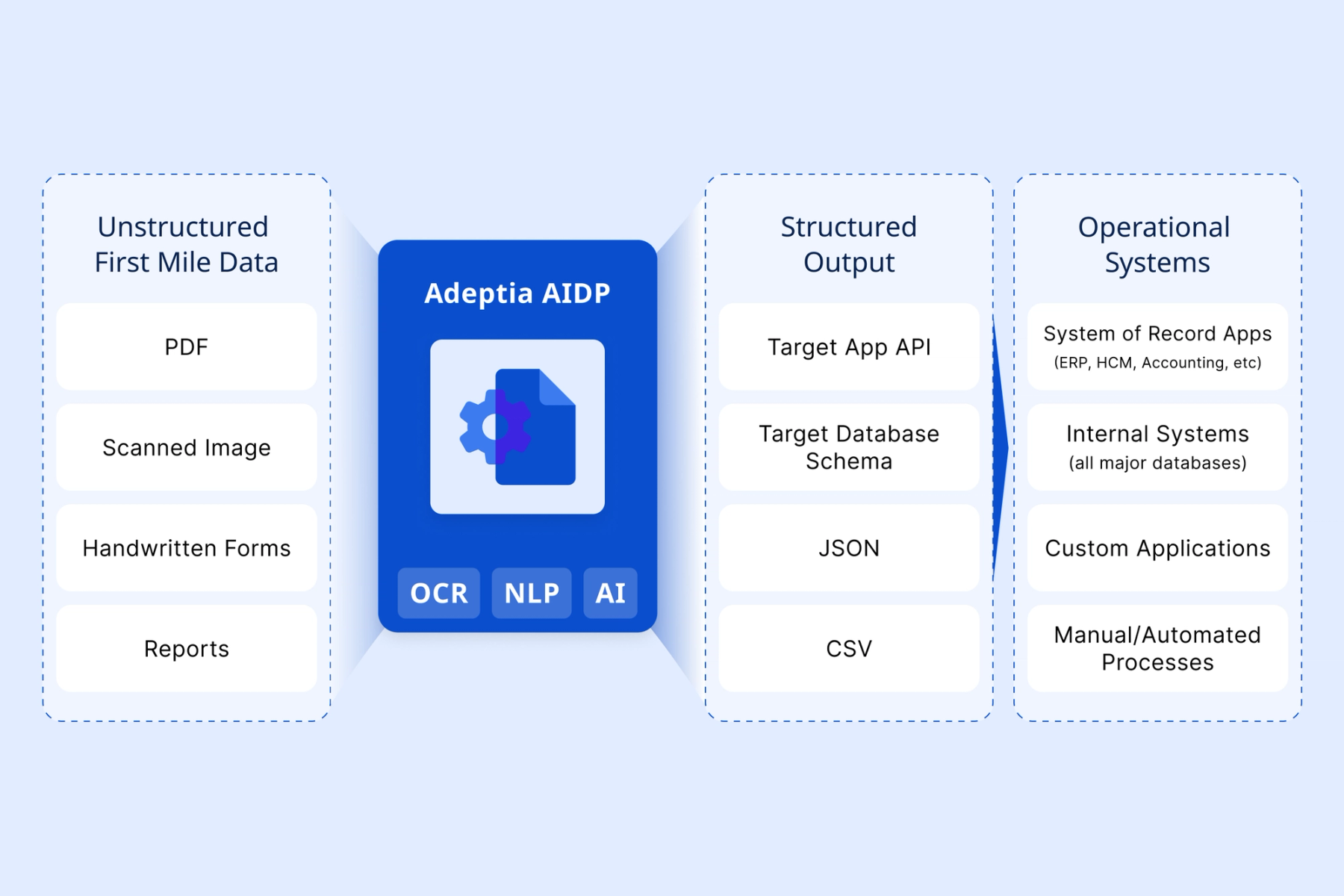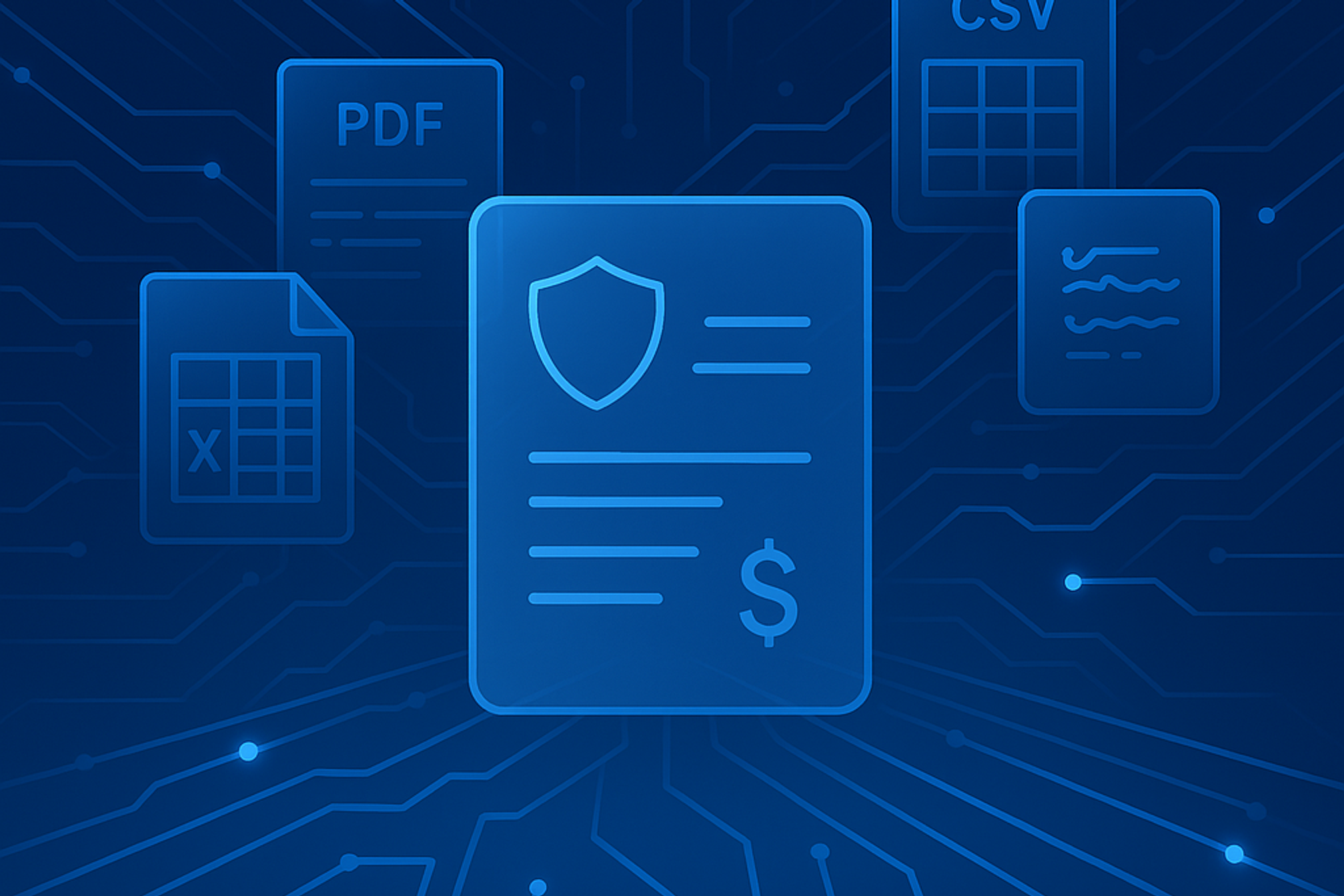Redefining Intelligent Document Processing
AIDP helps the world's largest enterprise brands better process their data - turning weeks into hours, eliminating manual workflows, and improving data accuracy beyond 90%




The Complete Workflow Solution
Go Beyond OCR with AIDP
AIDP brings together OCR, NLP, and AI to efficiently extract, process, and deliver first-mile data directly where it’s needed to accelerate business operations.
Most enterprise data starts in messy formats—PDFs, scans, handwritten forms, and images. These first-mile documents trigger key workflows but overwhelm traditional tools.

AIDP brings together OCR, NLP, and AI to efficiently extract, process, and deliver first-mile data directly where it’s needed to accelerate business operations.

Make Informed, Data-Driven Decisions with AIDP
AIDP meets the large-scale performance requirements that enterprises need — with the control of manual processes and efficiency of AI solutions
- 99% Accuracy

We leverage Optical Character Recognition (OCR), Natural Language Processing (NLP), and Artificial Intelligence (AI) to efficiently extract and process data with over 99% accuracy
- Seamless Integration

Structure your data for downstream use or plug directly into enterprise applications with Adeptia’s Connector Library.
- Deployment Flexibility

Meet your data where it's at with cloud, on prem, or hybrid deployments.
Explore Adeptia Intelligent Document Processing
Automate your first-mile data™ ecosystem without limits to power intelligent business operations.
Flexible Deployment for Real-World Data Environments
Our AIDP was designed specifically to work within the complex constraints of regulated industries — hybrid, on-prem, AWS or Azure.
- Data Sovereignty
On-premise IDP solutions allow organizations to maintain control over their data, ensuring it remains within their infrastructure.
- Integration with Existing Systems
Deploying IDP on-premise facilitates seamless integration with legacy systems and workflows.
- Meet First Mile Data Where it’s At
First-mile data is often born in non-cloud settings: manufacturing plants, financial institutions, healthcare systems, and regulated supply chains.
Resources
Related Resources

The First-Mile Data Gap in Modern Insurance and Financial Operations
A major insurance carrier recently discovered they were losing millions of dollars monthly in delayed revenue, not from poor investments or claim payouts, but from something far more mundane...

Getting to 99% Data Accuracy
In our last post, we shared how one business loan provider transformed their week-long, $25,000-per-month manual process into a five-minute automated workflow. But we left you hanging on one critical ...

How Modern Enterprises Use AIDP™ to Work with First-Mile Data™
Learn how modern enterprises use AI-powered Intelligent Document Processing (AIDP) to turn messy, unstructured documents into clean, structured data. Download the guide....
